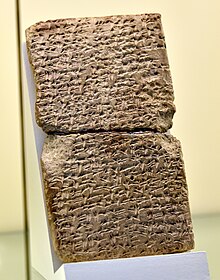T 전갈자리
T Scorpii| 관측 데이터 Epoch J2000.0 (ICRS) 이쿼녹스 J2000.0 (ICRS) | |
|---|---|
| 별자리 | 전갈자리 |
| 우측 상승 | 16h 17m 02.82s[1] |
| 탈위임 | −22° 58′ 33.9″ |
| 겉보기 크기 (V) | 6.8-<12.0[1] |
| 아스트로메트리 | |
| 거리 | 32.6kly(10.0kpc)[2] ly |
| 특성. | |
| 변수형 | NA([1]Fast nova |
| 기타 지정 | |
노바 전갈자리 1860, AAVSO 1611-22C[1] | |
| 데이터베이스 참조 | |
| 심바드 | 자료 |
T 전갈자리, 즉 노바 전갈자리 1860은 구상 성단 메시에 80 (M80)에 있는 노바였다.1860년 5월 21일 쾨니히스베르크 천문대에서 아서 폰 아우워스에 의해 발견되었고, 5월 28일 하트웰 천문대에서 노만 포그슨에 의해 독자적으로 발견되었다.[4][5]발견 당시 진도 7.5로, 최대 진도 6.8에 달해 전체 집단을 앞질렀다.[6]
T 전갈자리 는 어떤 종류의 항성에서도 관측된 최초의 노바자리였다.[7]2019년 현재 그것은 여전히 구상 성단에서 발생한 것으로 확실한 것으로 알려진 유일한 고전 노바였다.[8]T 전갈자리 26일 만에 3배 이상의 크기가 희미해져 '빠른 노바'라는 뜻이다.아우워스는 1859년 초부터 M80을 자주 관찰해왔으며, 노바를 처음 보기 사흘 전인 1860년 5월 18일에 관찰했을 때는 노바가 보이지 않았다고 보고했다.노바는 M80의 중심에서 3 아크초도 안 되는 곳에 위치해 있었다. 천문학자들은 이 물체의 중요성을 인식하고 발견 후 최소 7년 동안 M80의 외관을 면밀히 관찰했지만, 19세기 관측자들에 의해 이 별을 다시는 볼 수 없었다.[3]
1995년 샤라와 드리센은 허블우주망원경 이미지를 사용하여 대기권 노바를 식별했다고 발표했지만 2010년 다이볼 외 연구진은 울트라 바이올렛과 X선 관측을 바탕으로 다른 별을 대기권 노바로 식별했다.[9][10]후속 간행물은 다이볼 등 식별을 지원한다.[11][12]
참조
- ^ a b c d "VSX: Detail for T Sco". The International Variable Star Index. AAVSO. Archived from the original on 16 May 2015. Retrieved 16 May 2015.
- ^ Paust, Nathaniel E. Q.; et al. (February 2010), "The ACS Survey of Galactic Globular Clusters. VIII. Effects of Environment on Globular Cluster Global Mass Functions", The Astronomical Journal, 139 (2): 476–491, Bibcode:2010AJ....139..476P, doi:10.1088/0004-6256/139/2/476, hdl:2152/34371.
- ^ a b Sawyer, Helen B. (February 1938). "The Bright Nova of 1860 in the Globular Cluster Messier 80. and its Relation to Supernovae". Journal of the Royal Astronomical Society of Canada. 32: 69. Retrieved 20 December 2020.
- ^ Auwers, A. (1886). "Aus einem Schreiben an den Herausgeber". Astronomische Nachrichten (in German). 114 (3): 47–48. Bibcode:1886AN....114...47A. doi:10.1002/asna.18861140310.
- ^ Pogson, N. (1860). "Changes observed in the Cluster 80 Messier". Monthly Notices of the Royal Astronomical Society. 21: 32–33. Bibcode:1860MNRAS..21...32P. doi:10.1093/mnras/21.1.32.
- ^ Stoyan, Ronald 외, Atlas of the Messier Objects, Cambridge University Press, 2008 ISBN 978-0-521-89554-5 페이지 275
- ^ Wehlau, Amelia; Hogg, Helen Sawyer; Butterworth, Steve (April 1990). "Observations of Variable Stars in the Globular Cluster M80". The Astronomical Journal. 99: 1159. doi:10.1086/115404.
- ^ Doyle, Trisha F.; Shara, Michael M.; Lessing, Alec M.; Zurek, David (March 2019). "A Hubble Space Telescope Survey for Novae in the Globular Clusters of M87" (PDF). The Astrophysical Journal. 874 (1). arXiv:1810.12471. doi:10.3847/1538-4357/ab0490. Retrieved 20 December 2020.
- ^ Shara, Michael M.; Drissen, Laurent (July 1995). "Cataclysmic and Close Binaries in Star Clusters. III. Recovery of the Quiescent Nova 1860 a.d. (T Scorpii) in the Core of the Globular Cluster M80". The Astrophysical Journal. 448: 203. doi:10.1086/175952. Retrieved 20 December 2020.
- ^ Dieball, Andrea; Long, Knox S.; Knigge, Christian; Thomson, Grace S.; Zurek, David R. (February 2010). "A Far-ultraviolet Survey of M80: X-Ray Source Counterparts, Strange Blue Stragglers, and the Recovery of Nova T Sco". The Astrophysical Journal. 710 (1): 332–345. doi:10.1088/0004-637X/710/1/332. Retrieved 20 December 2020.
- ^ Kopacki, G. (March 2013). "Variable Stars in the Globular Cluster M 80". Acta Astronomica. 63 (1): 91–107. Retrieved 20 December 2020.
- ^ Göttgens, Fabian; Husser, Tim-Oliver; Kamann, Sebastian; Dreizler, Stefan; Giesers, Benjamin; Kollatschny, Wolfram; Weilbacher, Peter M.; Roth, Martin M.; Wendt, Martin (November 2019). "A stellar census in globular clusters with MUSE: A spectral catalogue of emission-line sources" (PDF). Astronomy & Astrophysics. 631. doi:10.1051/0004-6361/201936485. Retrieved 20 December 2020.




